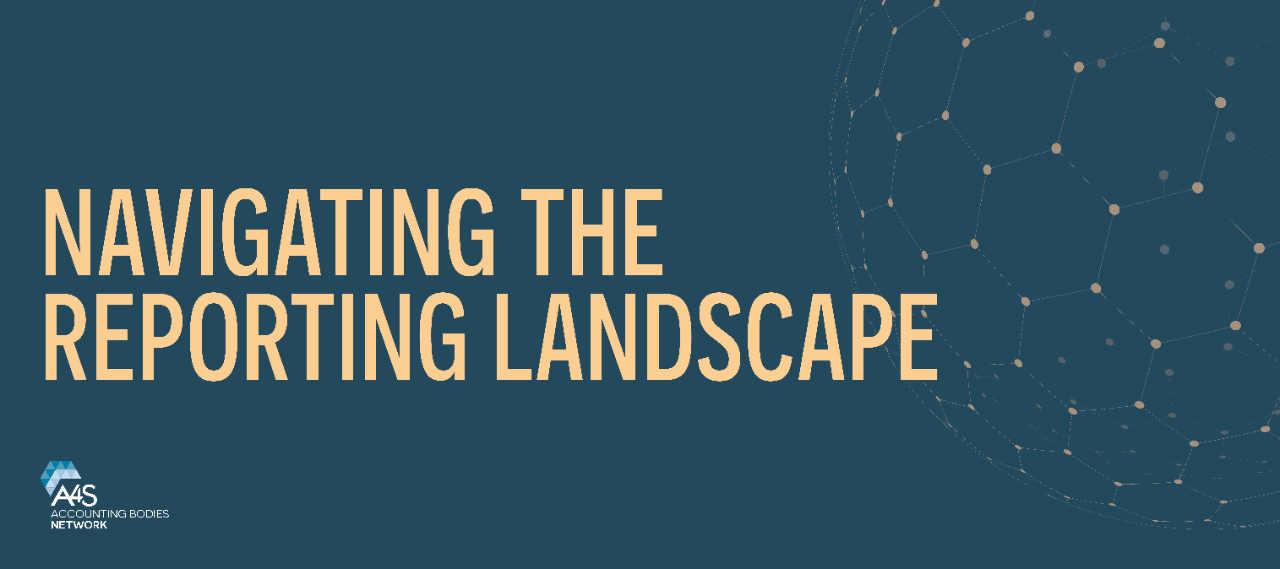Unlocking materiality as a source of value creation

Developing a successful sustainability-driven corporate strategy and providing effective and relevant sustainability disclosures both start with one key exercise: defining what really matters. This is often referred to as a materiality assessment.
Materiality assessments are essential to help organizations focus on the most important areas, taking into account the perspectives of shareholders and wider stakeholders. A clear view of what’s material will influence your organizational strategy, business model and risk management in responding to the needs of your investors, customers and other key stakeholders. Reporting on these material areas will also provide users with relevant information, both financial and sustainability-related, to inform their own decisions.
Materiality assessments are not without their challenges. Complexities arise when prioritizing different stakeholder perspectives, considering the full value chain and the time taken to go through the process.
The value of materiality beyond reporting
While undertaking a materiality assessment is often assumed to be purely about finding the most important areas of interest to a particular audience, the process has significant value and benefit beyond simply reporting. Indeed, reporting can, and arguably should, be considered as a secondary use of materiality assessments, after its more valuable purpose as a strategic management tool.
Monitoring and managing sustainability-related risks and opportunities are critical to business resilience, in an environment where these risks are becoming more severe and are hard to predict. Having a better understanding of the interconnectivity between the different aspects of social and environmental risks and opportunities, their materiality to your business and their dynamic nature, will enhance risk management, capital allocation and disclosure.
On the risk side, strategic materiality assessments are being used more and more by companies to support their identification of relevant risks. Indeed, alignment between the risk register and materiality assessment can signal the successful integration of sustainability into corporate strategy and existing core business processes.
A materiality assessment is not just about risks; it’s also about opportunities. The increased disruption we are experiencing – as a consequence of climate change and biodiversity loss, and from the actions to shift us towards a sustainable economy – also presents business opportunities.
When properly conducted, a materiality assessment can validate your organizational strategy and give you the opportunity to align your activities with the needs and expectations of your stakeholders – ensuring your sustainability efforts are relevant and meaningful to the people and communities you impact. This can lead to better decision-making around resource use and increased stakeholder trust, and help with staying ahead of emerging issues that could impact the future success of your organization.
THE MATERIALITY DEBATE FROM A REPORTING PERSPECTIVE
Organizations often find it challenging to determine what are the most material social and environmental factors on which to focus their efforts and what sustainability information should be included in their reporting. Varying definitions and approaches to materiality1 are adopted by different frameworks and standard setters, including the International Sustainability Standards Board (ISSB), the European Financial Reporting Advisory Group (EFRAG), the Global Reporting Initiative (GRI) and others.2 These approaches provide a wide range of materiality lenses for reporting purposes which can make it difficult to know where to start and what to focus on. Although there have been some efforts to achieve interoperability and coherence between these standards and frameworks, there is still no universal definition of materiality for reporting purposes, largely because each framework is asking a different question and a different stakeholder group against which to assess materiality.
The concept of double materiality – defined as a combination of financial and impact materiality – is at the heart of the debate. Within this, ‘impact materiality’ refers to organizational activities that affect either people or the environment, whether directly via the organization’s operations or indirectly in its value chain. Opinions differ on who the key stakeholders should be and the types of issues that should be considered material.
The ISSB standards and proposed climate disclosures from the US Securities and Exchange Commission guide companies towards providing comparable, consistent and reliable sustainability data that meets investor needs. They are designed to facilitate investment decisions and effective capital allocation. The ISSB qualifies that a company’s ability to deliver financial value for investors is inextricably linked to the stakeholders with whom it works and serves, the societies in which it operates, and the natural resources upon which it draws.3 However, this approach has been criticized by advocates for impact materiality, who argue that it lacks attention to environmental and social impacts caused by companies.
On the other hand, the GRI Standards and European Sustainability Reporting Standards (ESRS) emphasize the importance of impact materiality. The ESRS takes a double materiality perspective, putting impact materiality on an equal footing with financial materiality. The intent of this approach is to make it possible for investors and the public to assess a company’s contribution to a sustainable and fair economic system. Double materiality is based on a recognition that businesses should create value for all their stakeholders, while operating within planetary boundaries, as well as considering the impacts that the world will have on their own business (the financial materiality lens).4 However, some have suggested that including impact materiality is too ambitious and that proper double materiality reporting may not be implemented in time to address urgent issues, such as the climate crisis.
Essentially each approach aims to define sustainability issues that are significant to a company. However, they have different aims and target audiences.
Our Reporting Insights brief further unpacks the different definitions of materiality and explores an approach to defining materiality, as well as key elements for an effective materiality assessment process.
Insights from our networks
Through our work with the global finance and accounting communities, several perspectives have emerged:
- For some investors and primary users of financial and sustainability-related data, information on a company’s environmental and social impacts is key to understanding the risks and opportunities associated with their investments. We found this was particularly true for investors with longer time horizons or who were managing their investments at portfolio level. Having such information enables investors to respond to systemic risks and opportunities and to adopt macro stewardship approaches to engagement. This is particularly useful for issues that are difficult to predict, tend to materialize in the long term and are systemic – climate change or biodiversity, for example.5
- The way materiality relates to sustainability-related risks and opportunities is dynamic and industry-specific. Different groups of stakeholders have different views on which information is material, and those views can change over time. Issues which might initially be material in terms of their impact on the economy, environment or people can rapidly become material to enterprise value too. Many investors are interested in impact materiality on the basis that it highlights dependencies and externalities relevant for business resilience and long-term value creation.6
- A double materiality assessment process can help organizations consider the wider stakeholder group and bring together the financial and impact components of corporate sustainability reporting, supporting integrated thinking. We have also heard from audit committees that the double materiality approach can be useful for identifying focus areas for reporting and for supporting management decision making.
Given that an organization’s impacts on people and the environment can eventually have financial implications, clarity on these impacts appears to be critical to investors and other stakeholders.7 Although developing a comprehensive list of impacts and measuring them is challenging, this approach provides a thorough picture of sustainability performance and the associated risks and opportunities. Organizations can use the process to evaluate both the internal and external implications of their activities and to support transparent communications with all stakeholders, building trust.
Meaningful materiality assessments are a complex task, and guidance to support organizations will be needed. This guidance will need to be continually updated as practice evolves.
Materiality tips and tricks
As you navigate your materiality assessment process, the following tips will help to provide you with a solid foundation for your quest:
- Carry out regular assessments – materiality should ideally be assessed every 2–3 years, with reviews on an annual basis. This is true even if the outcome is not expected to change significantly. A change in business model or shift in operational context may also trigger a need to reassess.
- Engage broadly and think about different time horizons – engage with internal and external stakeholders, looking beyond shareholders’ priorities and concerns when identifying your areas of focus. Think about different time horizons and when environmental and social factors are expected to impact financial performance.
- Think beyond reporting – do not treat materiality as a compliance exercise but rather as a value-adding activity informing strategy, risk management and decision making, ultimately driving value creation.
- Focus on relevance – include information that is significant to stakeholders and useful in their decision-making processes. Matters that are relevant and important will be material.
- Consider starting from impact – the assessment of material impacts, as captured by the impact materiality perspective, is often the best starting point. This can set the foundation for identifying financially material matters. Consider how these material impacts may rebound in the form of material risks or opportunities for your financial position, performance, cash flows and access to finance.
- Make finance teams key to the process – draw on your finance teams, encouraging them to take a proactive role. Finance teams are experienced in providing reliable information and are likely to have unique insights into the organization, including an understanding of the connection between financial and sustainability performance. (See “Actions for finance teams” in our Reporting Insights Brief on Materiality and Metrics).
The lowdown: focus on the goal
Despite the debate on materiality definitions for reporting purposes, try not to lose sight of the goal: using materiality and the materiality assessment process as a map to glean insights for long-term sustainable business strategy and inform sound decisions that support business resilience and sustainable development. When materiality assessments are driven by long-term value creation for all stakeholders, the reporting thereof becomes about extracting, and making visible, subsets of information to respond to the relevant reporting frameworks as part of your broader stakeholder communication strategy.
Some resources to help you
Our Reporting Insights Series provides a useful starting point for insights into sustainability reporting, materiality and metrics, as well as governance, data collection, and reporting frameworks and standards. The Navigating the Reporting Landscape guide outlines different definitions and approaches to materiality.guide outlines different definitions and approaches to materiality.
Below is a useful set of resources to help guide materiality considerations within your organization.
References to the materiality concept in A4S existing material:
- Essential Guide on Social and Human Capital, pages 21–26
- Essential Guide on Enhancing Investor Engagement, pages 49–51
- Reporting Insights Brief: Materiality and Metrics, page 5
- Essential Guide on Management Information, pages 42–46
Other guidance:
- Webpage on materiality and podcast (Financial Reporting Council)
- The Reality of Materiality report (World Business Council for Sustainable Development)
- Implementation Guidance for the Materiality Assessment (EFRAG)
- The New Double Materiality Assessment (Boston Consulting Group)
- The Double-materiality Concept – Application and Issues (GRI)
- Preparing for the ISSB’s Sustainability Disclosure Standards (Chartered Accountants Australia and New Zealand and Deloitte)
- Comparing Sustainability Reporting Requirements (KPMG)
References
- Approaches to defining materiality can be found in the A4S Reporting Insights Brief: Materiality and Metrics
- Further information can be found in the A4S Navigating the Reporting Landscape guide
- ISSB describes the concept of sustainability and its articulation with financial value creation, and announces plans to advance work on natural ecosystems and just transition
- Further information on planetary boundaries
- For more details, read our response to the ISSB consultation on agenda priorities (September 2023)
- For more details, read our response to the ISSB consultation on IFRS S1 and S2 exposure drafts (July 2022)
- Some refer to the concept of ‘full materiality’, whereby all sustainability aspects are effectively tied to medium- and long-term enterprise value, so double and single materiality will not differ when looked at with a longer-term horizon. For more information watch A4S Summit – Mapping reporting developments in Europe.



